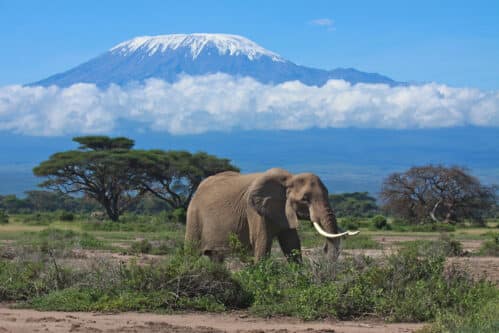
Climbing Kilimanjaro in November is like from these perspectives so that you can prepare for your journey accordingly. Climbing Kilimanjaro in November is one of the most challenging times to attempt this incredible feat due to a variety of weather, climate, environment and temperatures that make it difficult for even experienced climbers. From extreme winds to frigid temperatures and unpredictable conditions, there are many factors that can make or break your summit attempt. In this blog post we’ll look at what it’s like to climb Kilimanjaro in November from these perspectives so you know what you’re up against when planning your trip.
The weather in November on Kilimanjaro can be incredibly unpredictable. Temperatures may reach up to 70 degrees Fahrenheit during the day, but then drop below freezing at night. Wind chill is also a factor to consider as gusts up to 30 mph are not uncommon and can easily lower the temperature further. You should be prepared for rain or snow and pack accordingly with layers of warm clothes, hats, gloves and boots that provide insulation from the cold temperatures.
The environment of Kilimanjaro is another important factor when climbing in November. As you ascend the mountain terrain will gradually become more rugged. What was previously flat ground might now have rocky outcroppings and slippery trails due to rain or snowfall earlier in the month. Make sure you’re equipped with the proper gear and have experienced guides who know how to navigate such terrain. Additionally, be aware of potential altitude sickness at higher elevations as thin air can cause dizziness or fatigue more quickly than lower grounds.
The climate of Kilimanjaro in November is also a challenge to take on. While days may start off sunny, clouds tend to roll in during the afternoon and temperatures drop rapidly once they do. This could lead to whiteout conditions or complete fog which makes it difficult to gauge where you are going and even harder for your body to adjust to the colder air. Furthermore, inclement weather such as strong winds or thunderstorms could bring snowfall further up on the mountain – something that would be dangerous to face unprepared.
When planning a climb up Kilimanjaro in November, it’s important to have an understanding of the weather, climate, environment and temperatures you will be facing. With strong winds, frigid temperatures and unpredictable conditions at high elevation, it is definitely not an easy feat. That being said, with the right preparation and guidance you can still make your summit attempt successful. So if you’re up for this adventure keep these conditions in mind when preparing for your journey! Good luck!
